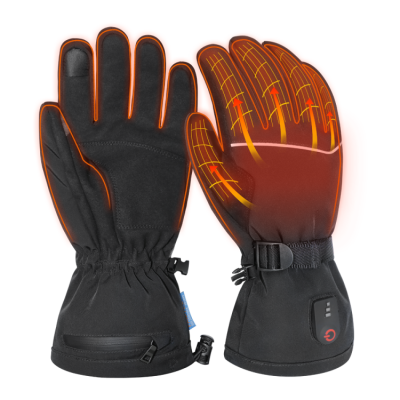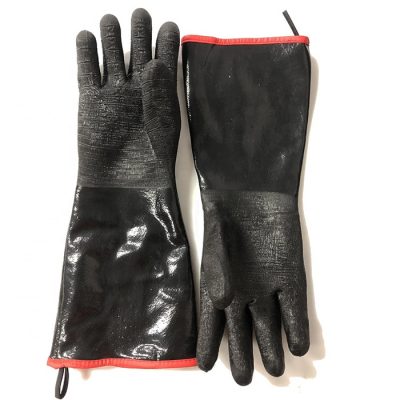![]()
![]()
![]()
![]()
Material: aramid + inner layer polyester cotton + outer layer silicone
Length: 33cm
Temperature resistance: 800 degrees Celsius
Uses: high temperature industry, oven, barbecue, etc.
This kind of glove adopts double-layer design, aramid + polyester-cotton lining structure, so it also provides excellent heat-resistance and flame-retardant properties. The polyester-cotton yarn absorbs sweat, has good hand feeling and can be dyed. The glove is fire retardant. The glove strengthens the tiger’s mouth between the thumb and the finger, making the thumb move more freely, and it is more convenient and more durable. Surface silicone dispensing, non-slip, environmentally friendly and non-toxic, using high temperature resistant and environmentally friendly silicone, excellent anti-skid performance, elegant appearance, easy to clean, can be used in both positive and negative, prolonging the service life. Gloves come in different styles and the length can be designed according to the length specified by the customer to meet the requirements of different customers. The hook design makes storage more convenient, saves space and prevents bacteria from breeding. In addition, the gloves can be cleaned to extend the life of the gloves without degrading performance.
Classification:
Insulating gloves are also called high temperature gloves, fire gloves, and high temperature gloves. It can be divided into:
Insulation gloves can be divided into: carbon fiber insulation gloves, asbestos insulation gloves, fiberglass insulation gloves, aramid resistant gloves, and general material insulation gloves.
According to the performance can be divided into: ordinary heat-resistant gloves, flame retardant high temperature insulation gloves, dust-free high temperature insulation gloves, anti-static high temperature insulation gloves, dust-free anti-static high temperature insulation gloves, anti-cutting wear High temperature resistant gloves. The two factors that must be considered when selecting high temperature resistant gloves are: contact temperature + single contact time. These two factors are indispensable. The temperature of the contact object is to consider that the glove material of the contact surface of the glove and the high temperature object does not reflect physically or chemically due to high temperature, for example, burning or carbonic after the ignition point, or oxidation after high temperature. The single contact time is the time to consider when the temperature reaches the inner layer of the glove from the outer surface of the glove and exceeds the temperature that the human hand can tolerate. If you are less than this time in a single contact, it is within a safe time frame.

























